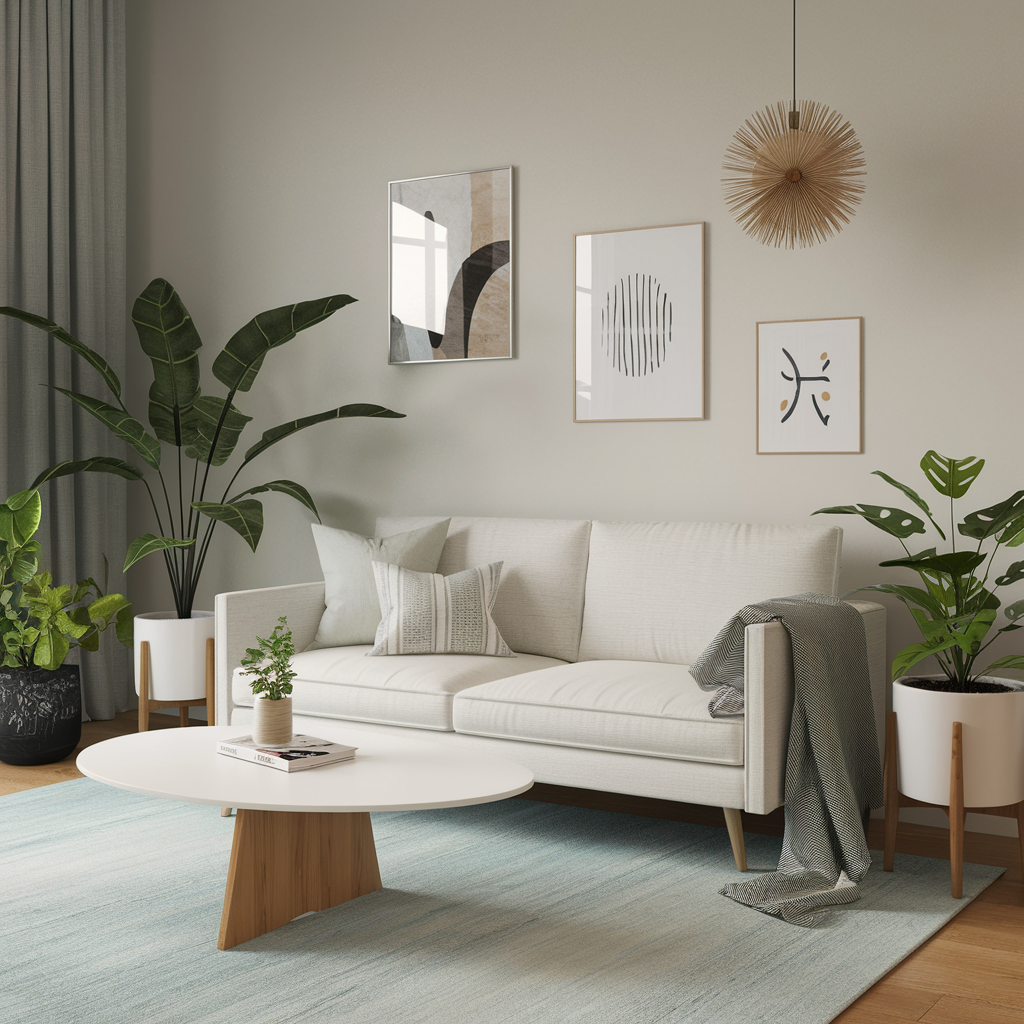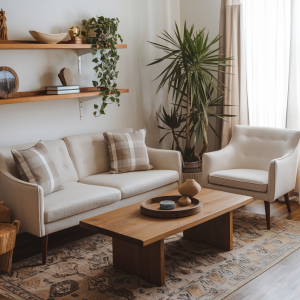1111111

Olivia Martinez
January 22, 2025
0 Comments
 People often forget the role furniture and fabric play in sustainable interior design. Using eco-friendly materials will lower your carbon footprint massively.
Select organic cotton, linen, or hemp, which are cotton, linen, or hemp produced without the use of chemicals or pesticides. These fibers are also strong and comfortable, making them user-friendly.
Another excellent option is recycled materials. Fabrics created out of repurposed bottles or old garments not only foster environmental sustainability but also offer a unique flair to the household.
When shopping for curtains or upholstery, always seek GOTS or OEKO-TEX labels as they indicate the material used was produced and processed it in an environmentally friendly and safe manner.
Pay attention to the fabric’s natural dyes because natural dyes are less noxious and come from natural sources so they are a healthier choice.
Consider how long the textiles last. Although pieces of high quality are costly, their durability allows them to not become waste as easily.
People often forget the role furniture and fabric play in sustainable interior design. Using eco-friendly materials will lower your carbon footprint massively.
Select organic cotton, linen, or hemp, which are cotton, linen, or hemp produced without the use of chemicals or pesticides. These fibers are also strong and comfortable, making them user-friendly.
Another excellent option is recycled materials. Fabrics created out of repurposed bottles or old garments not only foster environmental sustainability but also offer a unique flair to the household.
When shopping for curtains or upholstery, always seek GOTS or OEKO-TEX labels as they indicate the material used was produced and processed it in an environmentally friendly and safe manner.
Pay attention to the fabric’s natural dyes because natural dyes are less noxious and come from natural sources so they are a healthier choice.
Consider how long the textiles last. Although pieces of high quality are costly, their durability allows them to not become waste as easily.
At its most basic definition, sustainable interior design is about cherishing the beauty of the space,while ensuring the selected materials are caring for the environment. For example, go for eco-friendly materials and energy saving options that do not just beautify your home but also take care of your ecological footprint. Every decision ranging from selecting the appropriate textiles to adding organic components helps in creating an eco-friendly space. But how do you make sure that your every decision captures your idea of a perfect home mixed with sustainability?
Key Takeaways
- Use reclaimed wood and organic textiles to promote good indoor air quality and reduce negative impact on the environment.
- Use low VOC and non-toxic paints and finishes to maintain enhanced air quality indoors and provide a healthy living space.
- Use LED light bulbs as a source of energy efficient lighting to reduce carbon emissions in your home.
- Use low-flow fixtures and rainwater harvesting systems to promote sustainable water usage and conserve water at the same time.
- Teach members of your ecosystem practical knowledge on eco-friendly living and design through workshops, forums and feedback events.
Comprehending the Importance of Sustainable Design Focuses
Observing sustainable design focuses mean creating spaces that are visually appealing and are environmentally friendly. Applying these practices will accentuate your home while reducing the impact on the environment. Start by thinking about durability of design. Make sure the designs that you choose stands the test of time when it comes to style and sturdiness. This way, you won’t have to replace objects frequently and create unnecessary waste. Now start thinking about reducing energy consumption or energy efficiency. Adding lights in windows and proper insulation will help in lowering energy costs. Build windows and fitting skylights to increase sunlight and decrease dependency on light fixtures. Another key focus is functionality. Today’s homes foster an active lifestyle and people should be able to move freely around the house without having to squeeze through rooms filled with walls and furniture creating boundaries. This reduces excessive clutter and waste of space enabling too much furniture, which increases waste. Finally always focus on how your indoor environment affects your health. A sustainable design supports better quality of indoor air improving the living environment.Using Green Materials
While choosing raw materials for your interior designing project, always remember to look for materials such as sustainable wood options and non-toxic paints. These components lessen the suffering caused to the environment and promote a healthier dwelling.Wood That Are Eco Friendly
The choice of eco-friendly materials greatly determines the desired design style and overall comfort level of a home, as well as the impact left on the environment. The construction industry blow up the worse in enviroment destruction, and wood is the centerpiece of a particulao industry. This is why it is crucial to choose sustainable options when it comes to opting for wood for furniture and any other constructions. Make it a point to buy wood that is sourced from the Forest Stewardship Council (FSC) certified organizations. FCS guarantees responsible sourcing of wood while helping save forests and wildlife. Another suitable option is bamboo. As a grass, bamboo is a fast-growing plant enhaving its renewablility resource, cutting down on the ecosystem is not a issue at all. Additionally, the distinctive style of bamboo can elevate the modern aesthetic of your house. Also worth a thought is reclaimed wood. Using salvaged materials assists in decreasing waste while giving value to old timber. Reclaimed wood does not only tell a tale but also adds new character to your house. If traditional hardwoods are your preference, then augment your home with oak, maple and cherry. These woods are sustainble, durable and can highly reduce the need for replacements. Finally keep in mind to avoid exotic hardwoods as these commonly result in deforestation.Choosing the Right Paints for the Environment
It is amazing how a single coat of paint can change the appearance of a room. If you want a space to look different, paint is a good option to consider. While aesthetics do matter, non-toxic paints are just as important to consider. Non-toxic paints are our Recommended choices.If you’re wondering why we have placed them at the top, it is because traditional paints usually use Volatile Organic Compounds (VOCs) which emits harmful fumes, greatly effects the quality of air indoors. When looking for a paint to buy, make sure to check if they specifically say low or zero VOC paint as many brands have them. When shopping, it is also ideal to look for tags that say the product is non-toxic and environmentally friendly. For the oils, Natural paints made out of plant oil, clay and chalk is a great quality alternative to traditional paints. Not only are the paints more environment friendly, they are also far safer for your family. Non-glossy paints are great for the environment and your family’s health, however be sure to double check on the packaging if the paint is approved. Paint with the matte finish is usually of lower VOC compared to their glossy counterparts. To ensure the paint will have no negative impact when applied, always remember to have good ventilation. Keeping these precautions in mind will help you maintain a safe ecosystem and environment.Eco-Friendly Illumination Options
When it comes to eco-friendly illumination options, LED lights are the new innovation for your household. In addition to saving electricity, they use much less energy and time when compared to traditional bulbs. Additionally, there is no better way to make any room look even more magnificent than by letting in as much natural light as possible, all while cutting down your energy bills.Benefits of Using LED Lightings
In today’s world, one of the most popular sustainability practices is the use of LED lights compared to other forms of lighting. Switching from incandescent to LED bulbs is the best thing you can do for the environment and your pocket as it allows you to save on energy bills. Maintaining the same level of brightness with LED lights requires a fraction of the energy compared to what incandescent bulbs use. In fact, they use 80% less energy than old incandescent bulbs. And, lets not forget about sustainability. In addition to saving you money, LED Bulbs have a lifespan of 25,000 hours, meaning they cut down on waste. Additionally, LED bulbs allow for a reduction in cooling costs. Because they generate so little heat, your air conditioning does not have to work as hard in the summer saving you even more money. In addition, the variety of styles and colors makes LED lights perfect for all interior designs which adds to their flexibility. useful suggestions in making her house stand out and make it warmTaking Advantage of Sheer Curtains and Blinds
Sheer curtains or blinds are a simple yet effective method for maximizing natural light in any house whilst still giving the homeowner privacy. For people who love natural light, sheer curtains and blinds are perfect where they filter sunlight to any desired degree. Plus, they give a homeowner mask the view of the outside reducing the chances of blur people watching from outside. Note to users: When using blinds at home, you will need to use sunscreen as sunlight that comes filtered through still is harmful. For staying in comfy bedrooms, sheer curtains are great as they create privacy as well distance from the tiny window. In living rooms, where bare windows seem out of place, sheer curtains add sophistication whilst allowing the light to filter through.Using Elements of Nature
Using natural elements as a style approach not only adds beauty to your home but also increases your overall wellness. Elements like wood, stone, and plants foster wellbeing and can make your space a serene oasis. To begin with, consider incorporating wooden furniture or accents. Their organic textures and warm tones create a welcoming atmosphere. If you want to add character while being eco-friendly, consider adding reclaimed wood. Now it’s time to add stone elements. A polished marble countertop or rustic slate tile will add a touch of elegance and charm to your space. In addition to their great appeal, these types of materials are durable and low maintenance as well. Don’t forget to incorporate greenery indoors! It boosts your mood while helping to improve the air quality. Choose low-maintenance options like succulents or snake plants if you’re short on time. In case you have the time and desire for a bolder statement, you can consider larger plants like fiddle-leaf figs or rubber trees. Natural textiles such as wool, cotton, linen, or even raw silk may be used to decorate the space. Apart from being eco friendly, these types of textiles furnish your space while providing utmost warmth and comfort.Upcycling and Repurposing Furniture
Transforming old furniture into something new saves money and minimizes waste. With upcycling and repurposing, you can breathe new life into furniture that might have gone into a landfill. This approach to design is more sustainable. To begin, examine the items that you own. A worn-out dresser can be refurbished into a chic, modern TV stand, and old dining chairs can be reupholstered to match them. Make sure you also paint or stain furniture to give them a fresh, stylish look. New hardware on cabinet doors will add an instant contemporary vibe. An eclectic feel can also be created by mixing different furniture styles and shapes. If you are skilled, attempt making completely new pieces from old materials. Wooden pallets, for example, can easily be turned into a coffee table. Lastly, never dismiss thrift stores or garage sales. Apart from clothes, these places are great for potential projects that require a bit of personal touch. Keep an eye out for inspiring items that can be transformed with little fuss.Sustainable Color Palettes
A sustainable color palette is more than a collection of colors that look appealing for a particular interior design style. It signifies deeper values and an ethical approach to interior design. Go for colors that reflect nature to nurture the world around us while adding a touch of serenity. Earthy tones of green, brown, and light blue can help bridge the gap between your indoors and the great outdoors. Use low-VOC (volatile organic compounds) paints and finishes for a healthier option for you and your environment. With so many options to choose from, your personal style preferences will not only shine bright, but they will also support sustainability. Lastly, consider the longevity of your chosen colors. Timeless shades help you avoid the hassle of repainting walls frequently, helping you save resources and diminishing waste. Use natural inspired accent colors to add charm and beauty to the dull drywall, bright hues of flowers and rich tones of gemstones can make your space stand out while retaining tranquility. At the end of the day, adopting an eco-friendly color palette will not only help spruce up your home, but will also help reflect your commitment to eco-friendly living, thus enabling a balanced and responsible environment.Eco-Conscious Textiles and Fabrics
 People often forget the role furniture and fabric play in sustainable interior design. Using eco-friendly materials will lower your carbon footprint massively.
Select organic cotton, linen, or hemp, which are cotton, linen, or hemp produced without the use of chemicals or pesticides. These fibers are also strong and comfortable, making them user-friendly.
Another excellent option is recycled materials. Fabrics created out of repurposed bottles or old garments not only foster environmental sustainability but also offer a unique flair to the household.
When shopping for curtains or upholstery, always seek GOTS or OEKO-TEX labels as they indicate the material used was produced and processed it in an environmentally friendly and safe manner.
Pay attention to the fabric’s natural dyes because natural dyes are less noxious and come from natural sources so they are a healthier choice.
Consider how long the textiles last. Although pieces of high quality are costly, their durability allows them to not become waste as easily.
People often forget the role furniture and fabric play in sustainable interior design. Using eco-friendly materials will lower your carbon footprint massively.
Select organic cotton, linen, or hemp, which are cotton, linen, or hemp produced without the use of chemicals or pesticides. These fibers are also strong and comfortable, making them user-friendly.
Another excellent option is recycled materials. Fabrics created out of repurposed bottles or old garments not only foster environmental sustainability but also offer a unique flair to the household.
When shopping for curtains or upholstery, always seek GOTS or OEKO-TEX labels as they indicate the material used was produced and processed it in an environmentally friendly and safe manner.
Pay attention to the fabric’s natural dyes because natural dyes are less noxious and come from natural sources so they are a healthier choice.
Consider how long the textiles last. Although pieces of high quality are costly, their durability allows them to not become waste as easily.
